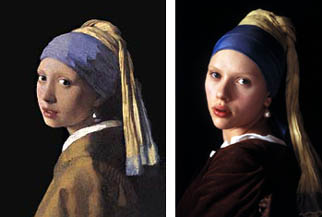
In our Women and Media class, we discussed how woman feel objectified no matter what the situation is when she’s approached with a “cat call” from a man. A male student questioned this logic and it seemed as if he could not completely grasp at the idea to why it’s always appalling for us and never flattering. As a young girl who’s been through situations and observed others as well, a man screaming at a girl at any age from across the street or wherever she may be does not make a girl feel as if she’s worth more than what she’s seen from the man’s gaze. It triggers fear and discomfort that the man most likely does not realize. When a man stares at an advertising of a woman showing off all her assets, he does not feel guilt towards the thoughts and desires he has for her because she can be seen as a fictional character and not a “real person”.
Laura Mulvey in her essay Visual Pleasure and Narrative Cinema, mentions as one of her opening statements, “The paradox of phallocentrism in all its manifestations is that it depends on the image of the castrated woman to give order and meaning to its world” (833). Men are seen as “all high and mighty” in society being able to achieve their goals without the hassle of cultural traditions holding them back, yet the woman holds power over his desires and pleasures and may even define who he is. The idea of a “trophy wife” to a hard-working man is distributed from the media from mediums such as television shows and magazine publishing. She is basically a slave to his needs and does not represent a hard-working woman who is successful through her studies, intuitions or experiences. Females are cast as second class citizens because of the pressures to stay contained and conform to the guidelines traditional society.
The oppositional gaze brings out the importance of race. Bell Hooks, in her essay The Oppositional Gaze: Black female spectators, speaks about the “power in looking” as a black female spectator critiquing Hollywood’s representation of black women in media. “When thinking about black female spectators, I remember being punished as a child for staring, for those hard intense direct looks children would give grownups, looks that were seen as confrontational, as gestures of resistance, challenges to authority” is how Hooks describes her starting encounter with the “gaze” (115). The restrictions of observing society and reading behind the lines were tainted with the idea of possibly offending individuals.
Hooks says“…watching television was one way to develop critical spectatorship” (117). She was able to look at the screen without being judged for staring and finally was able to realize the discrimination and negation of black representation. Black men were also able to see their portrayal on the screen as “their role as spectators, black men could enter an imaginative space of phallocentric power that mediated racial negation. This gendered relation to looking made the experience of the black male spectator radically different from that of the black female spectator” (118). It was tough for black women to identify with the black characters in the film because they were either portrayed as playing a white character, servants to white people or missing in the film all-together.
Before reading Bell Hook’s essay, I never looked beyond the idea of how men saw women in media. My mind always circled around the thought of a woman’s portrayal as a sexual object. Now it’s come to my attention at how women see other women in media whether it be inspirational or demeaning. The limitations in society for races other than white become a greater challenge when wanting to understand the reasons for certain portrayals. The lack of acknowledgement and integrity of black culture in older films show the struggle of a black female wanting to identify her role in society with the character on the screen. Movies that are made for black women, which have progressed from the shows and films Hooks mentions, still have certain negative connotations on the depiction of black females. I feel as if when productions make movies that are targeted for certain races, the stereotypes that are exemplified in society are the main characterizations for the actors.
No comments:
Post a Comment
Note: Only a member of this blog may post a comment.